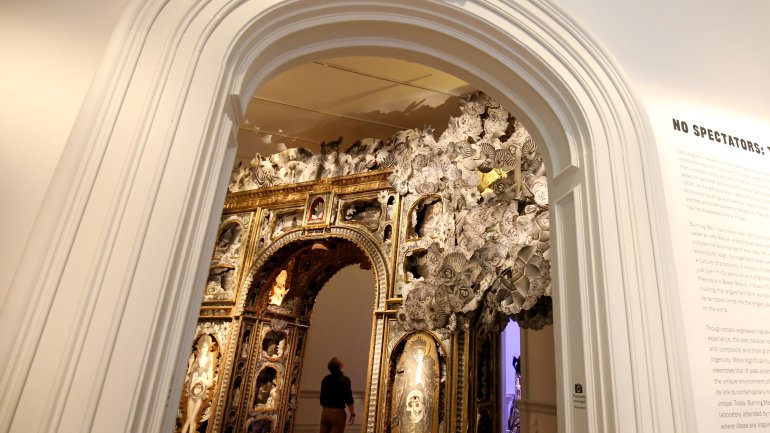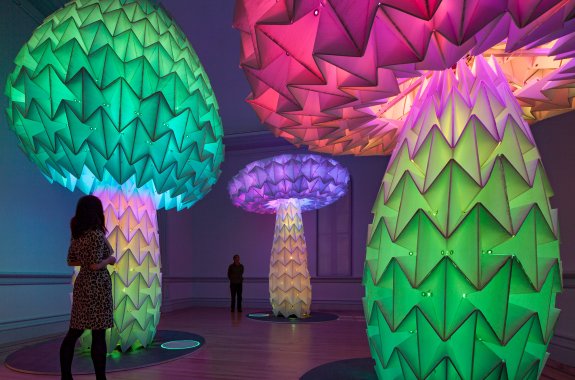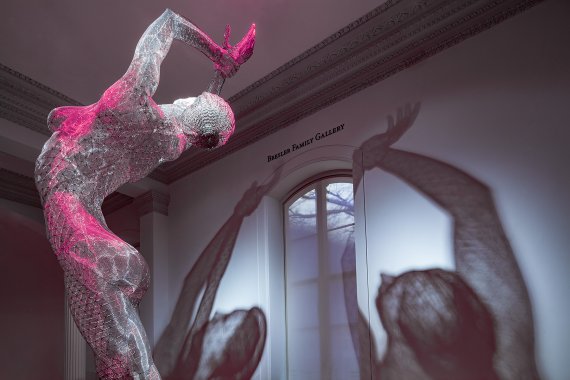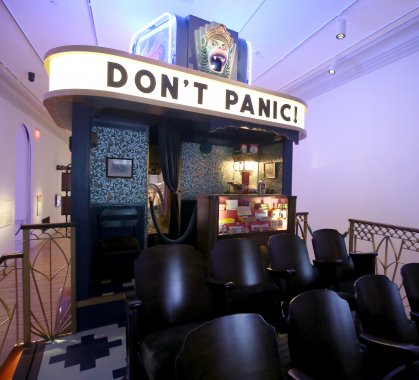The Renwick Celebrates Burning Man
One litmus test to decide that a work of art counts as craft is whether the art in question has a utilitarian purpose. Well, if the purpose of an artwork is to let dusty naked people climb all over it, does that make it craft?
Sure. Why not? “No Spectators: The Art of Burning Man” opened March 30 at the Renwick Gallery. Washingtonian magazine reported that more than 20,000 people came through the gallery the first weekend in April. Some patrons reported waiting to get in for more than an hour. For the first time in memory – and perhaps for the first time its 40-year-history – the Renwick is hosting the hottest exhibition in Washington.
Hardline craft enthusiasts may bemoan that the Smithsonian gallery where they could previously find raku-fired ceramics (and other craft mediums) has been turned over to the “Burners,” as patrons who attend the annual Nevada festival are called. But those curmudgeons should know two things:
- There is still plenty of fascinating, intricately wrought craft on display at the Renwick.
- Burners don’t all run around naked. That’s evident in the many stunning photos and video installations on display, as well as the self-made and commissioned costumes included in “No Spectators.”
True, there are plenty of tourists in the gallery who just want to take selfies with the giant, neon "magic mushrooms" made from corrugated plastic mail bins. But no one can accuse Nora Atkinson of curating an show that will appeal only to Instagrammers: There’s no cell phone service in the Burning Man pop-up community known as Black Rock City.
Two upstairs rooms are devoted to the festival’s history, from its nascent beginnings on the beach in San Francisco, to the early 1990s as a “really great party” in the desert, to its current iteration as a highly organized gathering for soul searchers committed to leaving no trace, even if that means burning the art they create.
Many exhibition standouts were commissioned by the Renwick from artists whose work would typically not survive. The Paper Arch, by Michael Garlington and Natalia Bertotti, is a staggering work that should be appreciated from every vantage point in the gallery. Garlington and Bertotti printed out thousands of photographic images of flowers, glued them to wood and corrugated cardboard, then layered them like Lincoln logs until the turrets topped two stories, with one side spraying out higher, as if it’s already been torched by monochromatic flames. Look closely, and you can see the petals, look even closer, and you’ll see four peepholes leading to elaborate dioramas. (Personal favorite: A memorial to Broadway dancer and actress Marta Becket, who died in 2017.)
Burners appreciate interactive artwork, hence the catch phrase “No Spectators.” Oakland collective Five Ton Crane honored that tradition by creating the Capital Theater, a Nickelodeon on wheels. The popcorn isn’t actually for sale, but you can still curl up and watch a cheeky-but-authentic silent film The Picnic. Metalworkers and civilian Instagrammers will marvel at Truth is Beauty, a scaled-down re-creation of Marco Cothrane’s steel-rod sculpture that depicts a dancer balanced on her wiry toes, back arched and arms extended behind her.
There’s no better testament to the art of Burning Man, however, than the balsa-wood cathedral created by David Best and the Temple Crew. As in the Nevada desert, Best helmed a team of workers who built confessionals, faux chandeliers and flying buttresses out of thin wooden slivers. Visiting worshipers are encouraged to carve and draw on the blocks, then sit and mediate for a while before walking out onto DC streets again, hopefully with their heads clear and minds refreshed, no trip to Nevada (or nudity) necessary.







